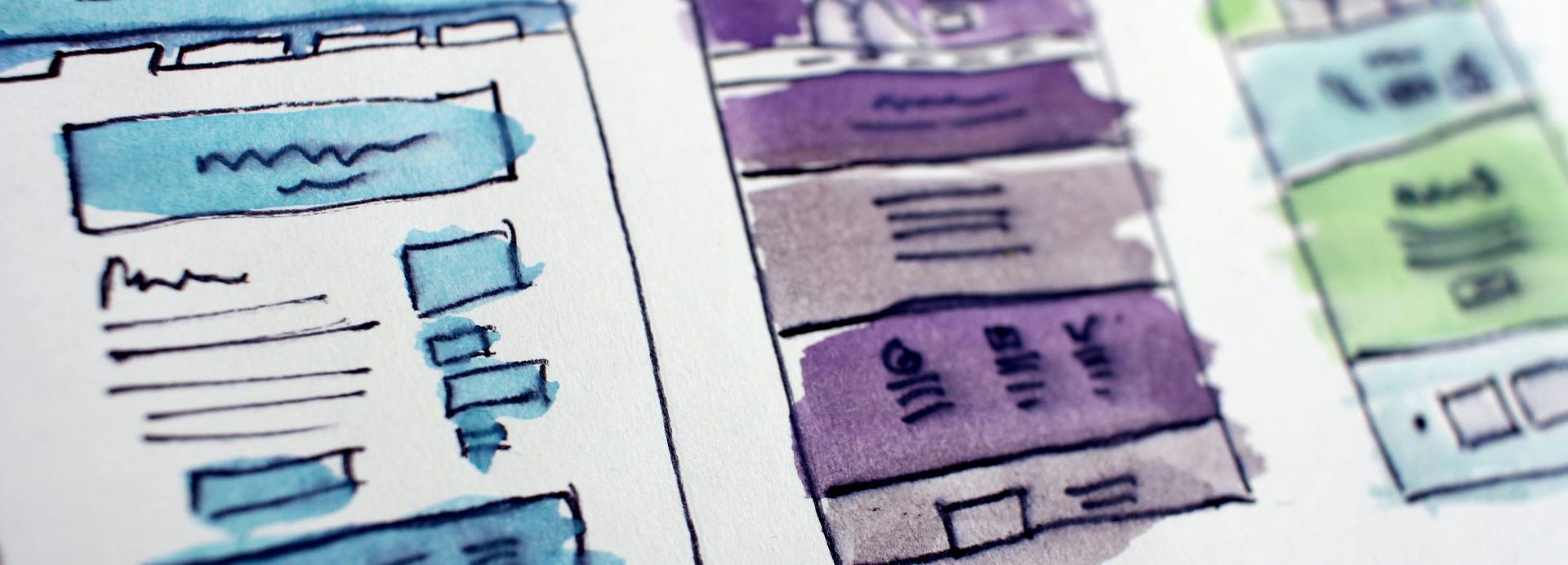
The Concept Sketch - Sketch Series - The Design Sprint Unpacked
Sixty Second Summary
In this series of articles, we’re taking a look at the individual parts which make up a Design Sprint, how each part helps us work towards a user-tested prototype, and how you can use the activity on its own within your business’s Design-led decision making process.
The Sketch Series focusses on the “Four-Part Sketch” Design Sprint activity. Today, we’re taking a look at the last of these parts, with the Concept Sketch.
Full Article - 5 Minute Read
The Three-Pane Concept Sketch
The last part of the Four-Part Sketch, the Concept Sketch or Solution Sketch, is the ultimate artefact we’re looking to create from this process - where each member of the Sprint Team is working individually on their ideas and sketches. It is from these sketches, which we’ll go into detail here, that we’ll create the storyboard and define the prototype product or service we’re going to create and test.
Due to the nature of the Concept Sketch, and the fact it’s normally produced at the end of one day and shared at the beginning of the next, it is a perfect candidate for a homework task - allowing the Sprint Team members to spend the afternoon and evening working on the sketch where they feel most comfortable, and perhaps even making more than one attempt at it.
The Structure of the Sketch
The Concept Sketch’s structure is key to the activity, and the following Art Gallery activity, as it gives everyone a common ground to work from, but also assists in the presentation of these ideas. (Yes, these ideas will be shared with everyone).
The worksheet for the Concept Sketch should be made up of three landscape sheets of A4 taped together along their long edges. The left half to two-thirds of each sheet should be set aside for sketches, wireframes, etc and the remaining paper on the right-hand side should be used for written notes and explanations about what is happening in the scene.
At the top of their worksheets, each member of the Sprint Team should write down a descriptive title for the product, service or process which they are about to sketch. Then, each of the three panels in the worksheet should show and describe a particular step, process or aspect of that idea.
A great Concept Sketch will use a good mix of illustrations, annotations and explanations to detail what is happening in each panel, and help the rest of the team understand the idea. Colours and iconography can be used to highlight specific areas of the sketch, but they needn’t be seen as necessary.
Examples of Concept Sketches
Example #1
Working with a team of university students, Karsten Nebe from Dominic Kennedy ran a design sprint to work on the challenge “There is no convenient way to record and share instructions for DIY projects.” In just five days, the length of a Design Sprint 1.0, they and their team aimed to come up with a solution to this challenge.
One of the Concept Sketches from their Sprint, shown here and drawn by Karsten themselves, outlines a feature called “Doc-Doc”, which makes it easy for teachers to create interactive tutorials and upload them to a fictional platform called “Loops”.

Using a slightly different format to the one we describe, Karsten placed post-its with sketches of the various steps onto a piece of paper. And around the post-its, they added notes and explanations of what is going on as a user starts to create their tutorial, scene by scene, and then export it as a compiled video.
Example #2
In developing their Development Portal, Merck worked with Thoughtbot to understand the challenge and come up with a prototype solution. As part of this, the team produced their Concept Sketches and reviewed them on Day Two of their four-day Design Sprint.

Here, Merck and Thoughtbot have again used the “post-its on paper” format for the Concept Sketch, and multiple sketches can be seen here. The dots are part of the Art Gallery voting exercise, which we’ll cover next week.
In these Concept Sketches, you’ll see less of a focus on fidelity of the illustrations and more a focus on quickly getting across the structure and idea, with an explanation next to each step.
Example #3
Taken from our own Design Sprint, which resulted in the invention of Sprinty, this Concept Sketch is my idea for how the customer would order and receive Sprinty using an online store. Each page contains an illustration of the step, with post-its and notes used to add information to the sketches.

Again, elements of this Concept Sketch have been voted on, represented by the coloured sticky dots, which we’ll cover next week. At the top of the worksheet, we’ve also grouped the relevant research post-its for the illustrations, so we could see which boxes we were ticking with each sketch.
Next Week
That’s the four-post Sketch Series completed. Next week, we’ll continue Design Sprint Unpacked with a look at the Art Gallery and voting activities that come from the Concept Sketch.
As always, if you’d like to be the first to know when new parts of The Design Sprint Unpacked drop, make sure to sign up for our mailing list or follow us on LinkedIn and Twitter.